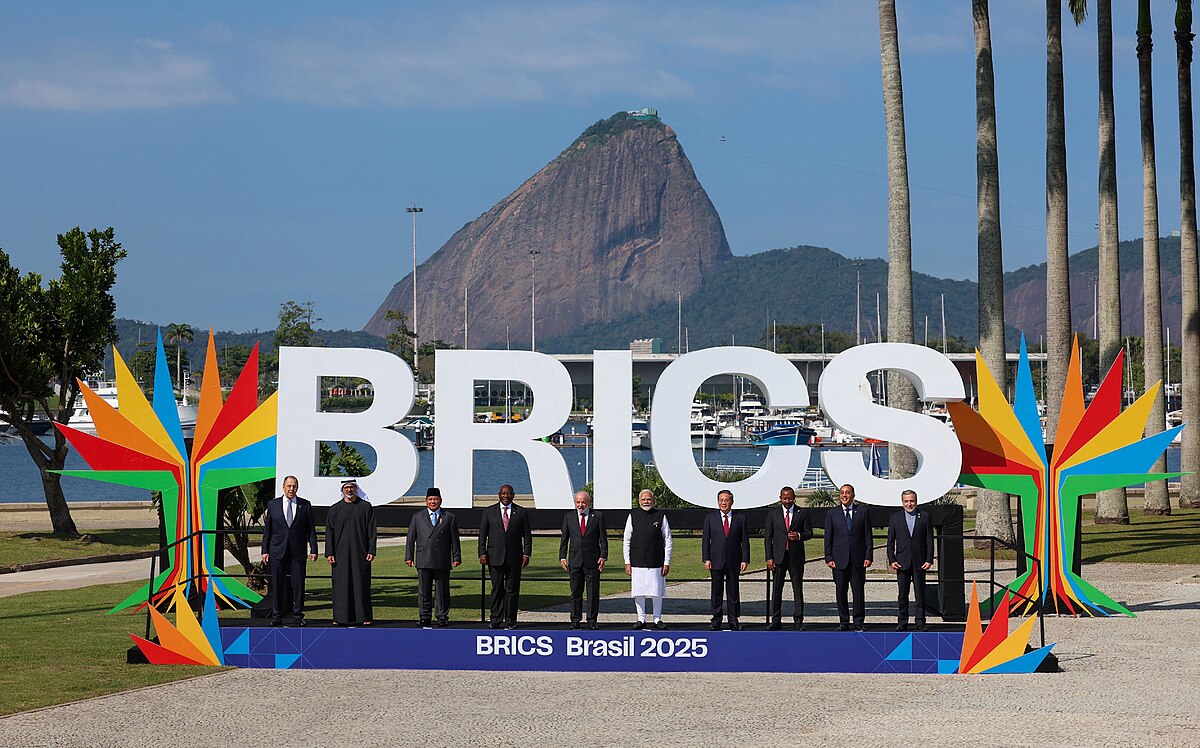For decades, the US dollar has dominated global trade. From oil to imports of daily essentials, the dollar has been the “go-to” currency. But in recent years, things have started to shift. With the growing clout of countries like India, China, Brazil, and Russia, the BRICS group of nations is now looking for ways to reduce its heavy dependence on the dollar.
And right at the center of this discussion is the Indian Rupee. Could the rupee be on its way to becoming a true international currency? Let’s break it down in a simple way.
Why Is Everyone Talking About the Rupee in BRICS?
The buzz started when the Reserve Bank of India (RBI) opened the door for countries to settle their trade with India directly in rupees. This meant businesses wouldn’t need to convert money into dollars first. For example:
- When Indian importers buy oil from Russia, they can pay in rupees.
- Russian banks hold those rupees in special accounts called “vostro accounts”.
- Later, they can use those rupees to buy Indian goods, invest, or convert into roubles.
This move was seen as a bold step toward rupee internationalisation—and it caught the attention of not just BRICS nations, but the world.
India’s Clear Position
Now, it’s important to understand what India is actually aiming for. Despite headlines about “de-dollarisation,” the Indian government has clarified that it is not trying to replace the dollar.
Instead, India wants to encourage local currency trade with partner countries. That means focusing on bilateral agreements—like with Russia, the UAE, Sri Lanka, and others—rather than leading a global movement against the dollar.
So, the approach is practical: not to challenge the dollar directly, but to give Indian businesses more flexibility and reduce the risk of relying on a single currency.
What Happened at the BRICS Summit?
At the latest BRICS summit, leaders discussed ways to expand local currency trade. While some members (like Russia and Brazil) are vocal about reducing dollar use, India has been more cautious.
- A common BRICS currency? That idea is still in the very early discussion stage. There’s no timeline, and India isn’t fully convinced it’s practical yet.
- Local trade in rupees and other currencies? That’s already happening. For example, Russia and India are increasing rupee settlements.
So, the focus right now is on step-by-step expansion, not giant leaps.
Why It Matters for India
- Saves Money on Conversions
Every time Indian importers convert rupees into dollars and then back again, they lose money on exchange fees. Trading directly in rupees makes the process cheaper. - Protects Against Dollar Fluctuations
The dollar often rises and falls depending on US policies. For Indian traders, this creates uncertainty. Settling in rupees reduces that risk. - Boosts Global Trust in Rupee
The more countries use the rupee for trade, the stronger its reputation as a reliable currency becomes. - Strengthens India’s Economic Position
A globally recognized rupee means more bargaining power for India in global trade negotiations.
Interesting Facts About Rupee Trade
- India and Russia have already settled billions of dollars’ worth of trade in rupees since 2022.
- Over 20 countries have shown interest in opening vostro accounts in Indian banks.
- The RBI has even allowed international rupee loans for neighboring countries like Sri Lanka and Maldives.
- The UAE recently became one of the first major partners to conduct oil trade with India in rupees.
Challenges on the Road Ahead
Of course, it’s not all smooth sailing. There are some major challenges:
- Global Acceptance: The dollar is trusted worldwide. The rupee still needs to build that kind of reputation.
- Limited Convertibility: Unlike the dollar or euro, the rupee is not fully convertible yet. That limits its flexibility in global markets.
- Coordination Issues: For rupee trade to succeed, India needs strong coordination with partner countries and their banking systems.
Advantages of an International Rupee
- Less dependence on the U.S. dollar → Reduces forex risk for Indian businesses.
- Stronger global recognition → Makes the rupee a respected currency.
- Boost to Indian economy → More stable trade and easier investments.
- Lower transaction costs → Importers/exporters save on conversion charges.
- Financial security → Protects India from global currency fluctuations.
FAQs About Rupee & BRICS
1. Are BRICS countries now officially trading in rupees?
Not all. Some, like Russia, are actively doing it. Others are still in the process of exploring the option.
2. Does India want to replace the dollar?
No. India is not looking to overthrow the dollar. The goal is simply to give Indian businesses more flexibility by promoting local currency trade.
3. How does this help ordinary Indians?
Cheaper and more stable trade means lower costs for businesses. In the long run, this could mean better prices for consumers.
4. Is there going to be a common BRICS currency?
Not anytime soon. Right now, the focus is on strengthening trade in local currencies like the rupee, rouble, or yuan.
5. What’s next for the rupee?
India will keep expanding rupee trade with more partner countries. Over time, this could make the rupee a stronger player in global finance.




One thought on “BRICS Countries & The Rise of the Indian Rupee: Is It Becoming a Global Currency?”